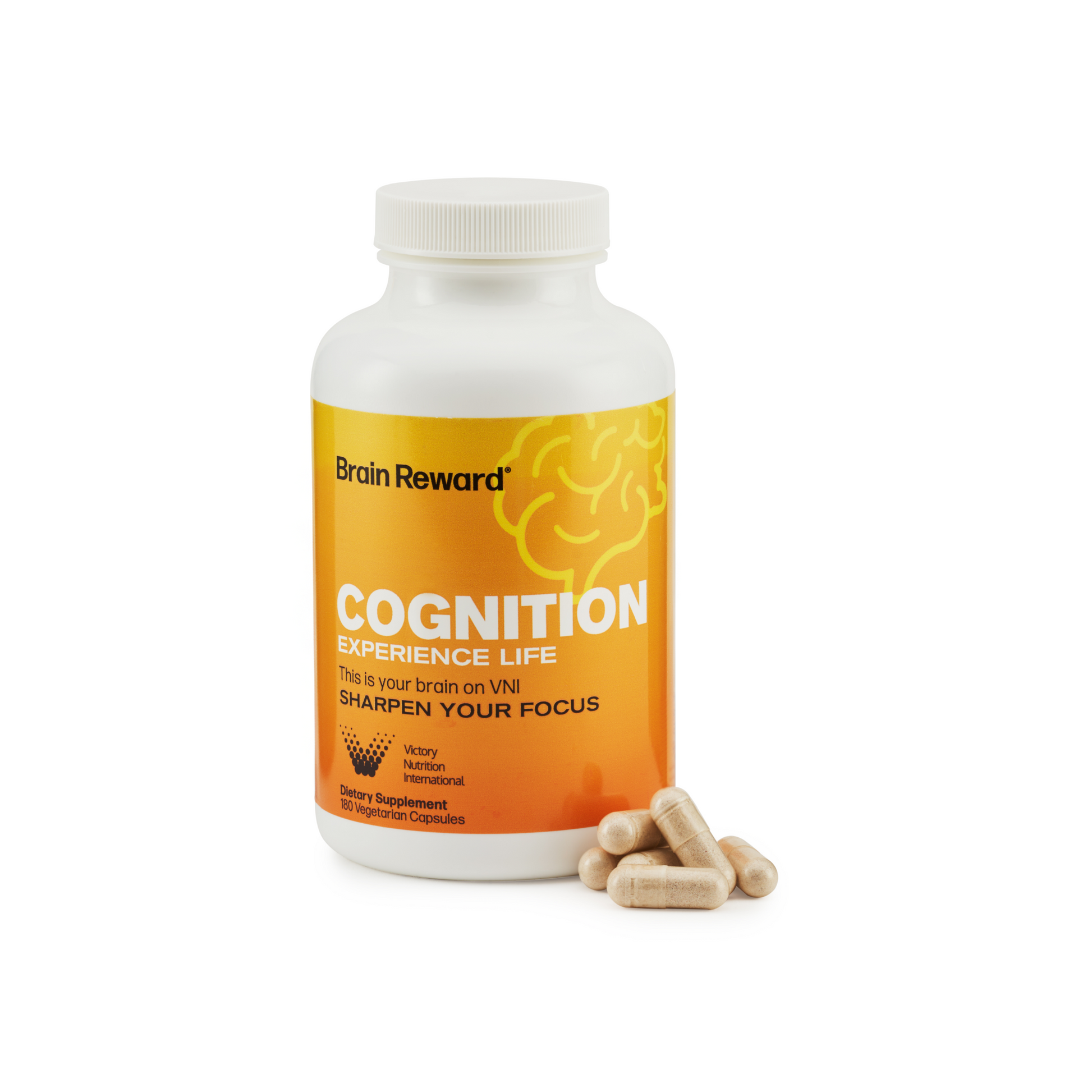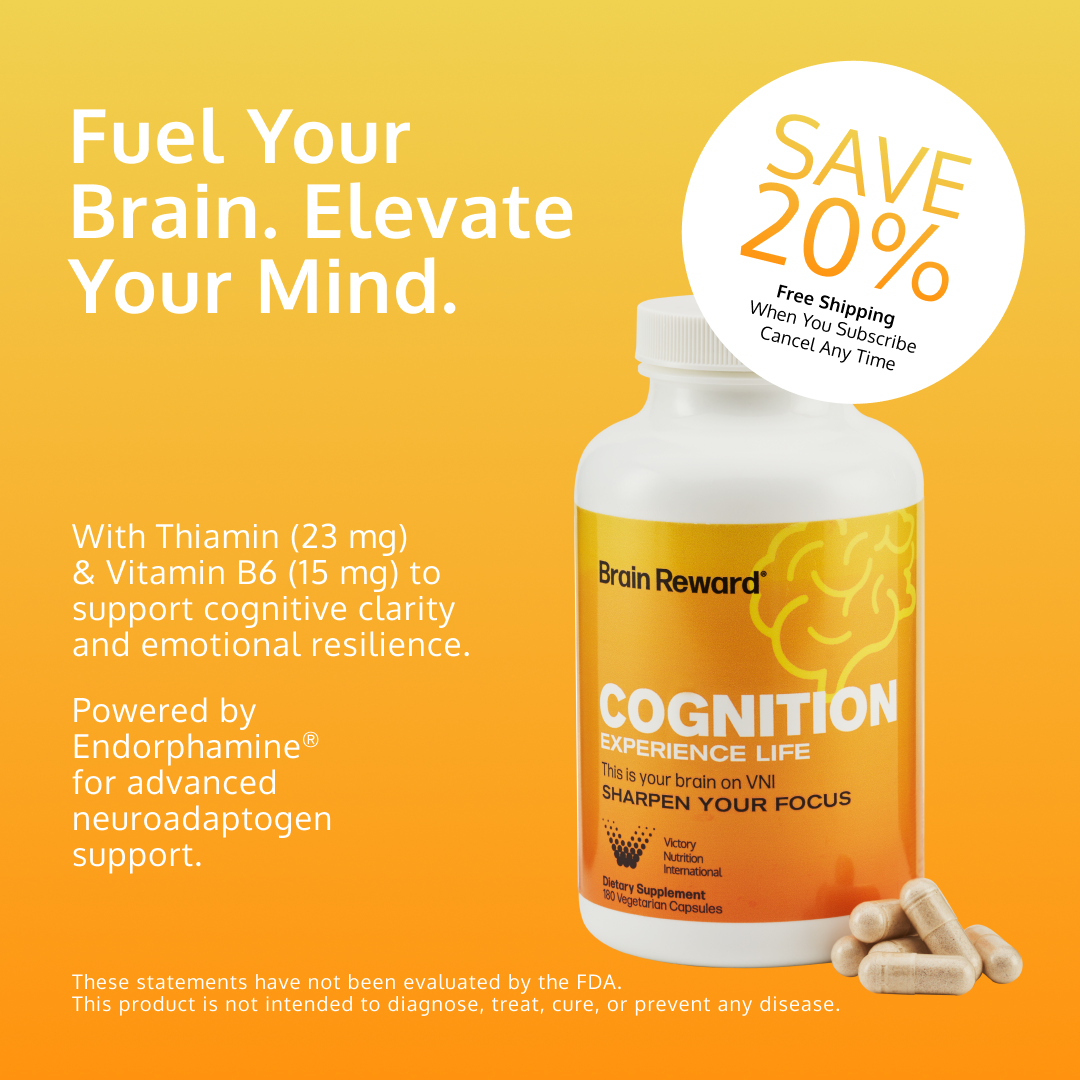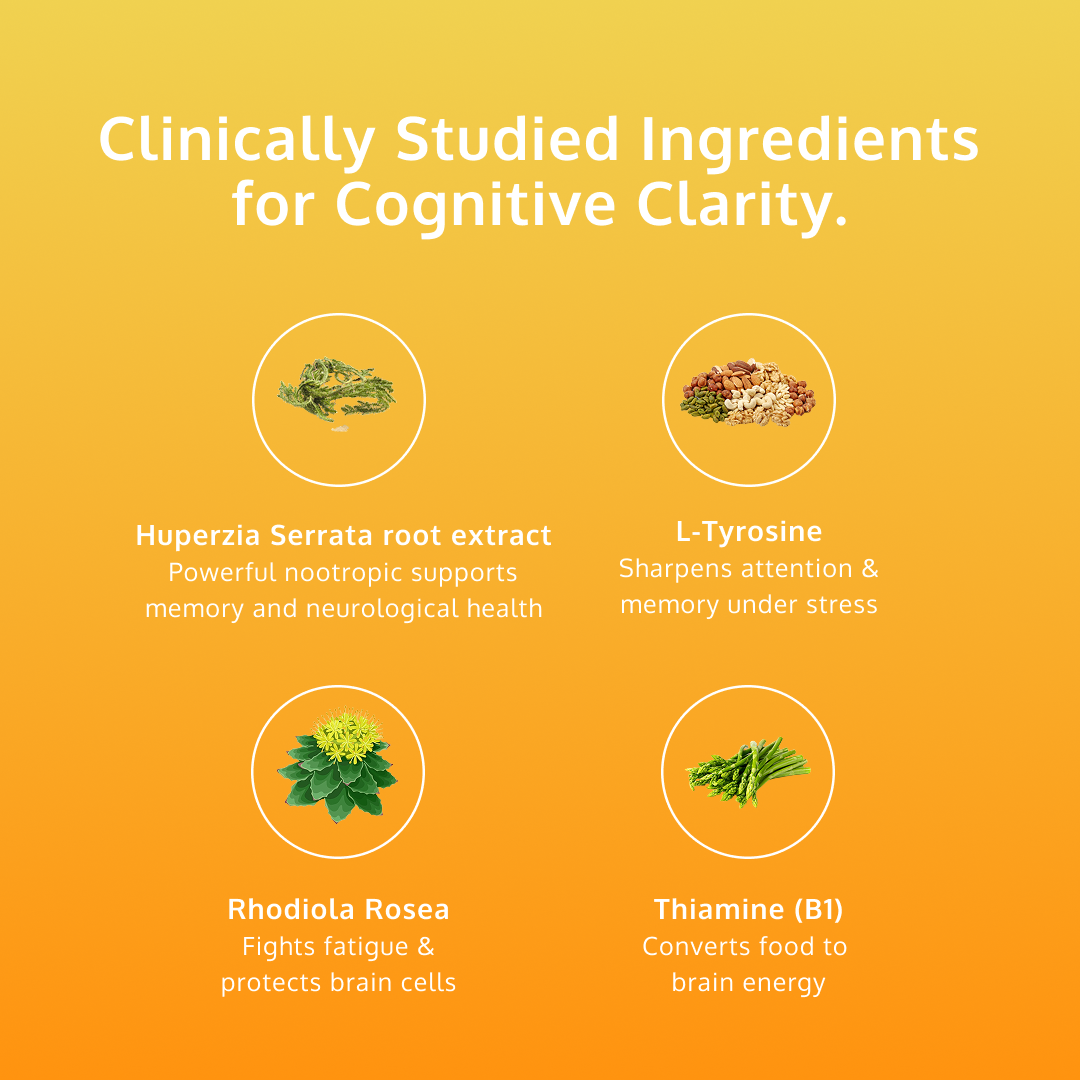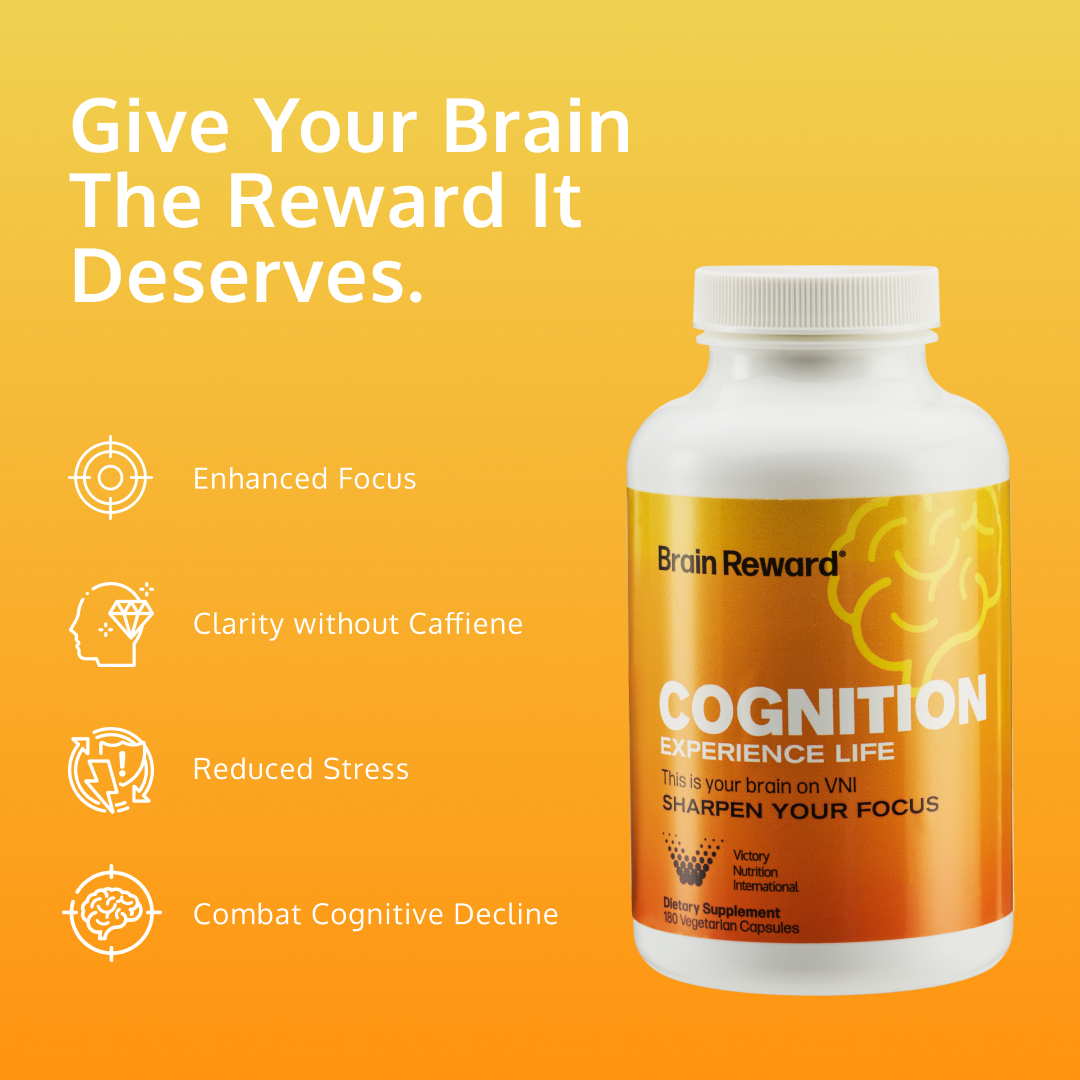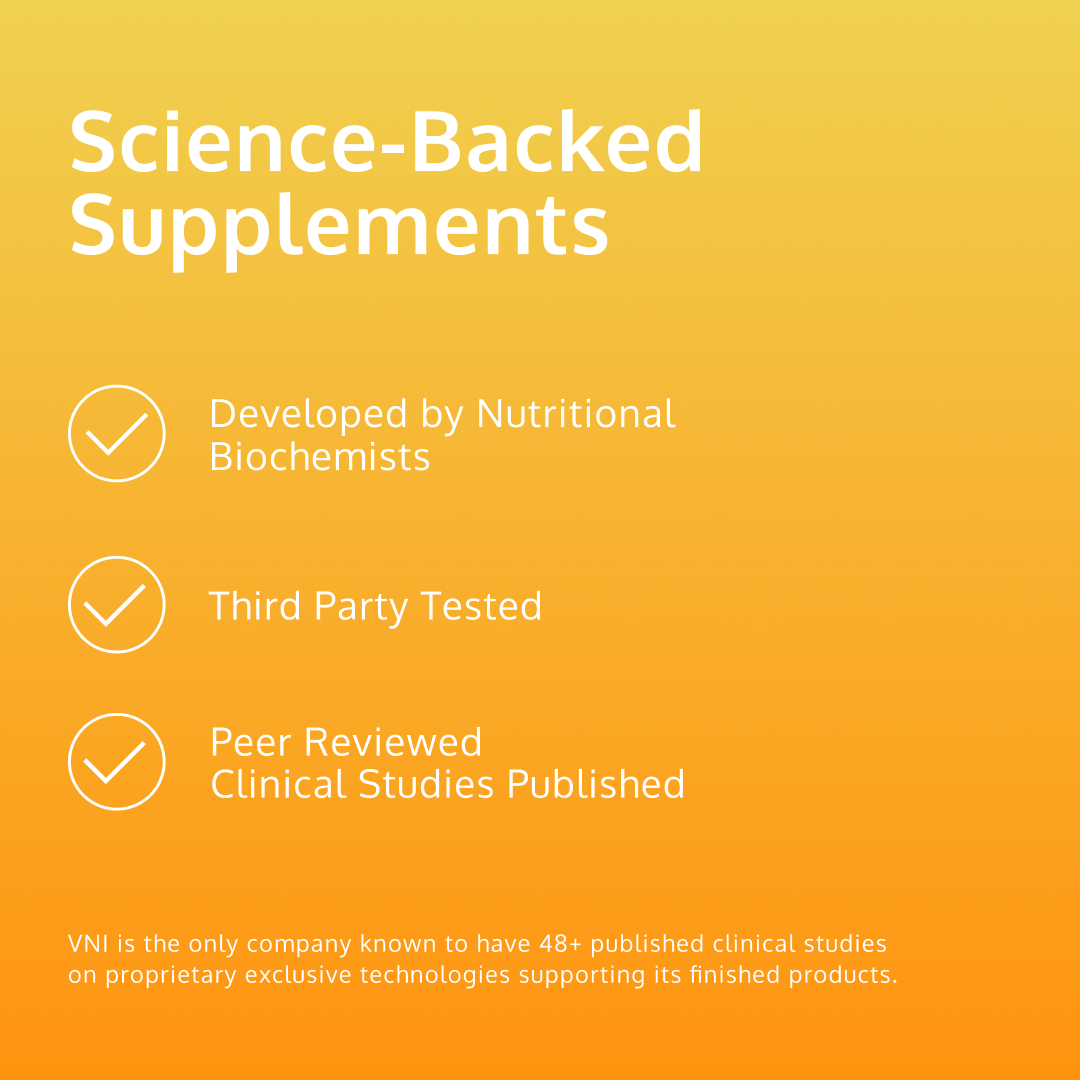Focus & Energy
Brain Reward®
Brain Reward®
Focus Boosting Capsules
FOCUS SUPPLEMENT
Restore your feel-good. Sharpen your focus. Vitalize your body's command center.
- Enhanced Focus
- Clarity Without Caffeine
- Reduced Stress
- Combat Cognitive Decline
30 DAY MONEY BACK GUARANTEE Find out more.
CREATE A REWARDS ACCOUNT. Earn reward points on every purchase. Redeem for discounts on future purchases.
30 servings.
Brain Reward® is a scientifically formulated, epigenetic, nutrigenomic nootropic supplement designed to support optimal brain function, enhance mental clarity, and promote a balanced mood. By providing essential nutrients and compounds that support a neurotransmitter function, Brain Reward® helps improve focus, reduce stress, and promote a sense of wellbeing. Utilizing VNI’s advanced Prodosome® technology, Brain Reward® ensures fast and efficient absorption, providing immediate cognitive and emotional benefits. If you want a brain focus supplement, invest in Brain Reward ® today.
Prodosome® Encapsulation Technology
Function: Protects and delivers nutrients directly to the cells, ensuring maximum absorption.
Benefit: Enhances the bioavailability of all ingredients, ensuring faster and more effective support for brain health.
Supplement Facts
Supplement Facts
Serving Size: 6 Capsules (3.0 g).
Servings Per Container: 30.
- Thiamin (as thiamine hydrochloride): 23 mg
- Vitamin B6 (as pyridoxal-5-phosphate, pyridoxine HCI): 15 mg
- Chromium (as chromium polynicotinate): 292 mcg
Endorphamine® Nutrigenomic Neuroadaptogen Complex: 2,800 mg
- DL-Phenylalanine (D-PhenEze™).
- L-Tyrosine.
- Passionflower Extract (Aerial Parts) (3.5% Vitexin).
- Metallosaccharide™ Complex [Arabinogalactans, N-Acetyl glucosamine (GlucosaGreen®), Astragalus (Root), Aloe Vera (Inner Leaf), Indian Frankincense Gum Resin, White Pine Bark Extract, Spirulina (Zehntose™).
- Rhodiola Root Extract (3% Rosavins) (RhodiGen™).
- L-Glutamine.
- 5-Hydroxytryptophan (5-HTP).
- Thiamine Hydrochloride.
- Pyridoxal-5-phosphate.
- Pyridoxine HCI.
- Gymnema sylvestre Leaf Extract (25% Gymnemic acids).
- Chromium polynicotinate (ChromeMate®).
- Huperzia serrata Root Extract (Huperzine A 1%) (ALZine™).
Other Ingredients
- Dicalcium Phosphate
- Soy Lecithin Phospholipids (Prodosomes™)
- Croscarmellose
- Cellulose
- Stearic Acid
- Magnesium Stearate
- Silicon
- Vanilla Flavoring
Key Ingredients & Benefits
How to Use
Take six capsules of Brain Reward® brain focus supplement daily with water on an empty stomach, or as directed by a healthcare professional. For optimal cognitive support, it can be used consistently or as needed during periods of heightened stress or mental demand.
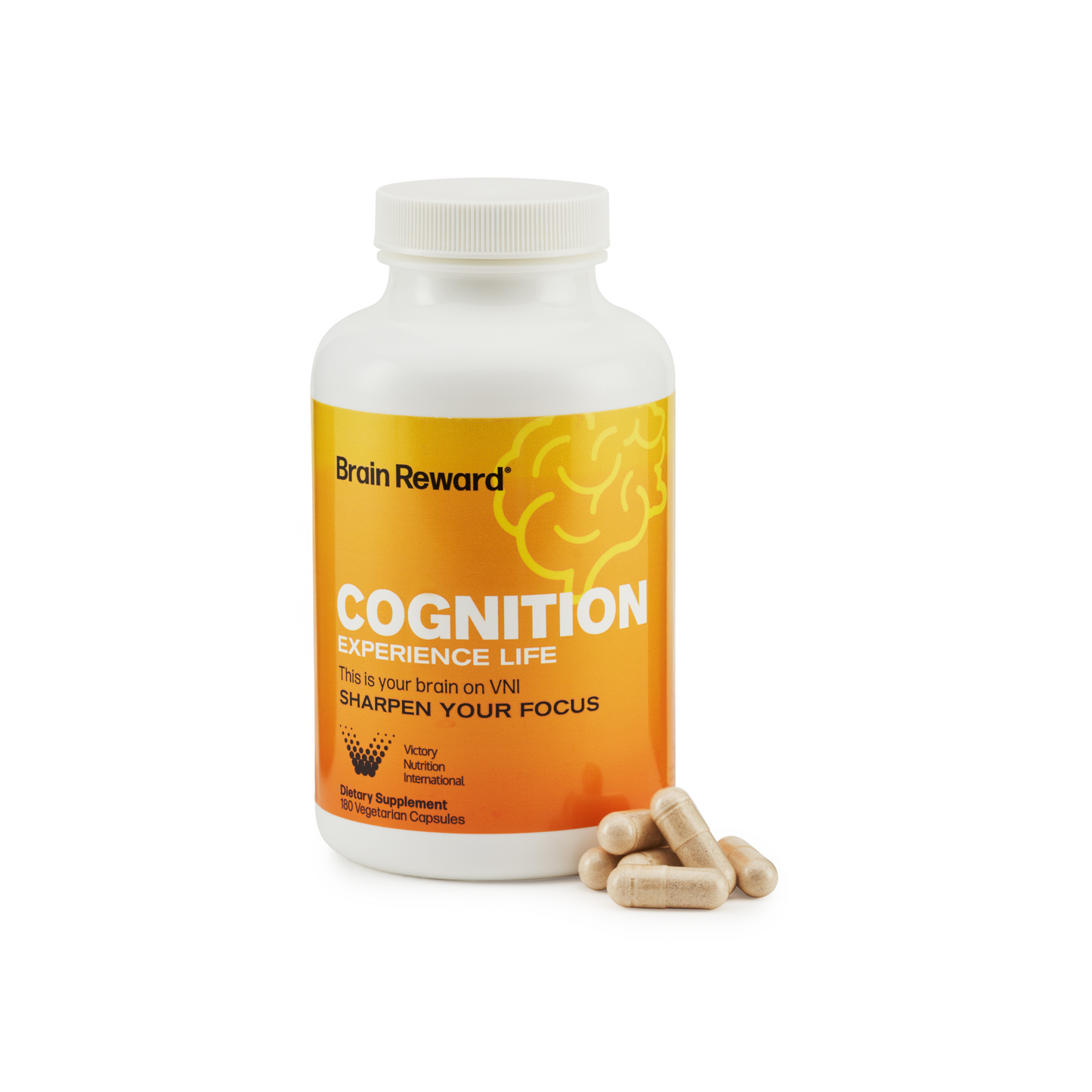
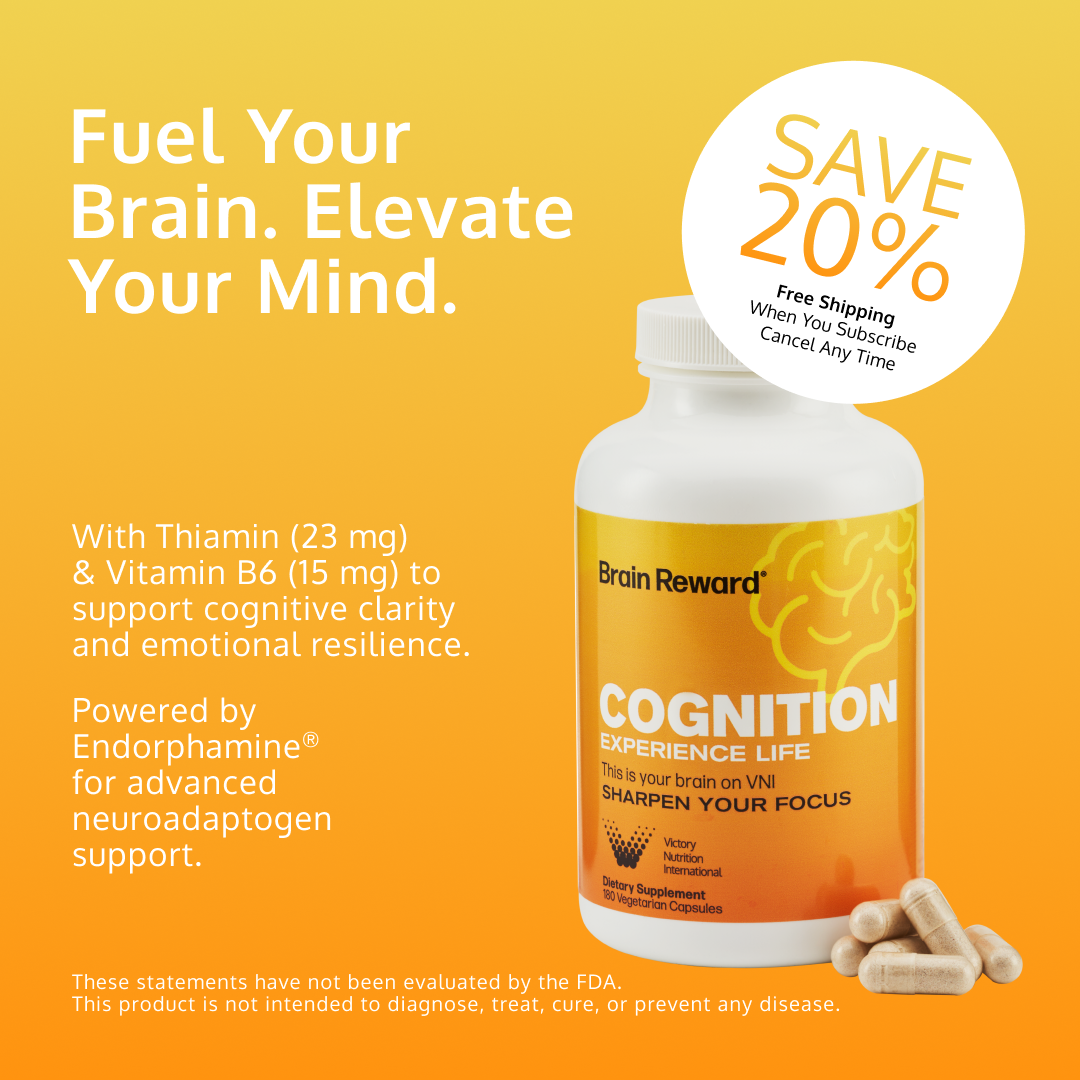
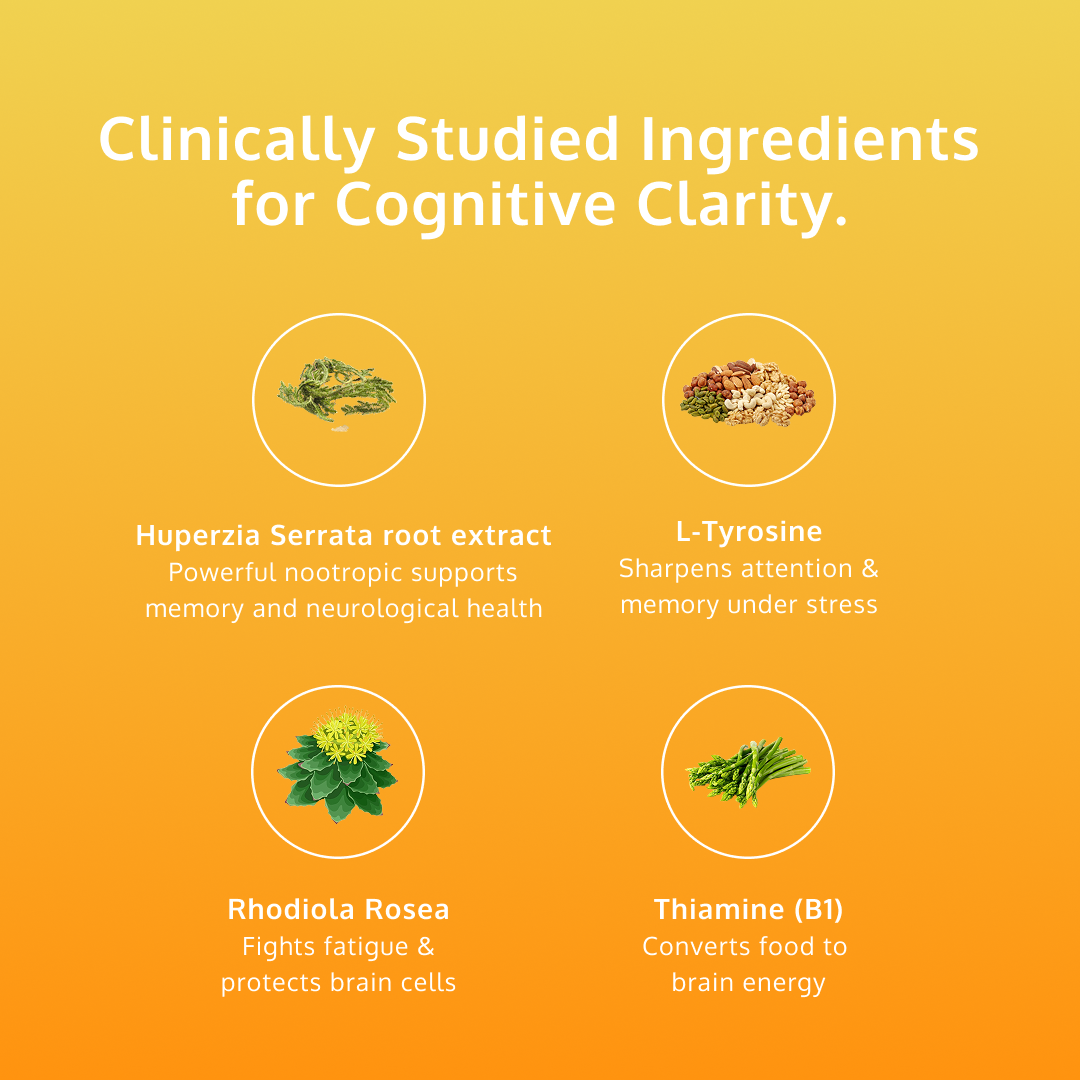
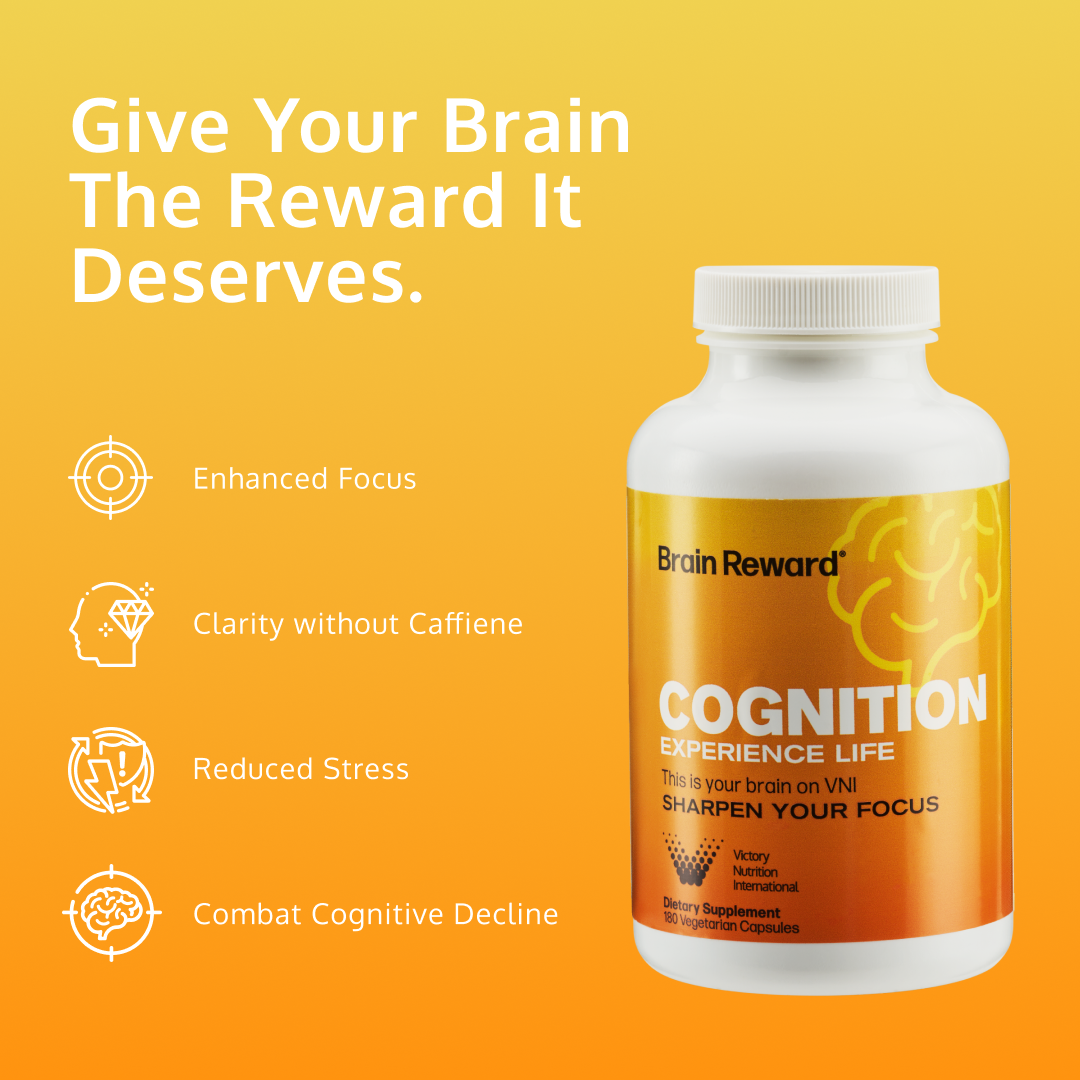

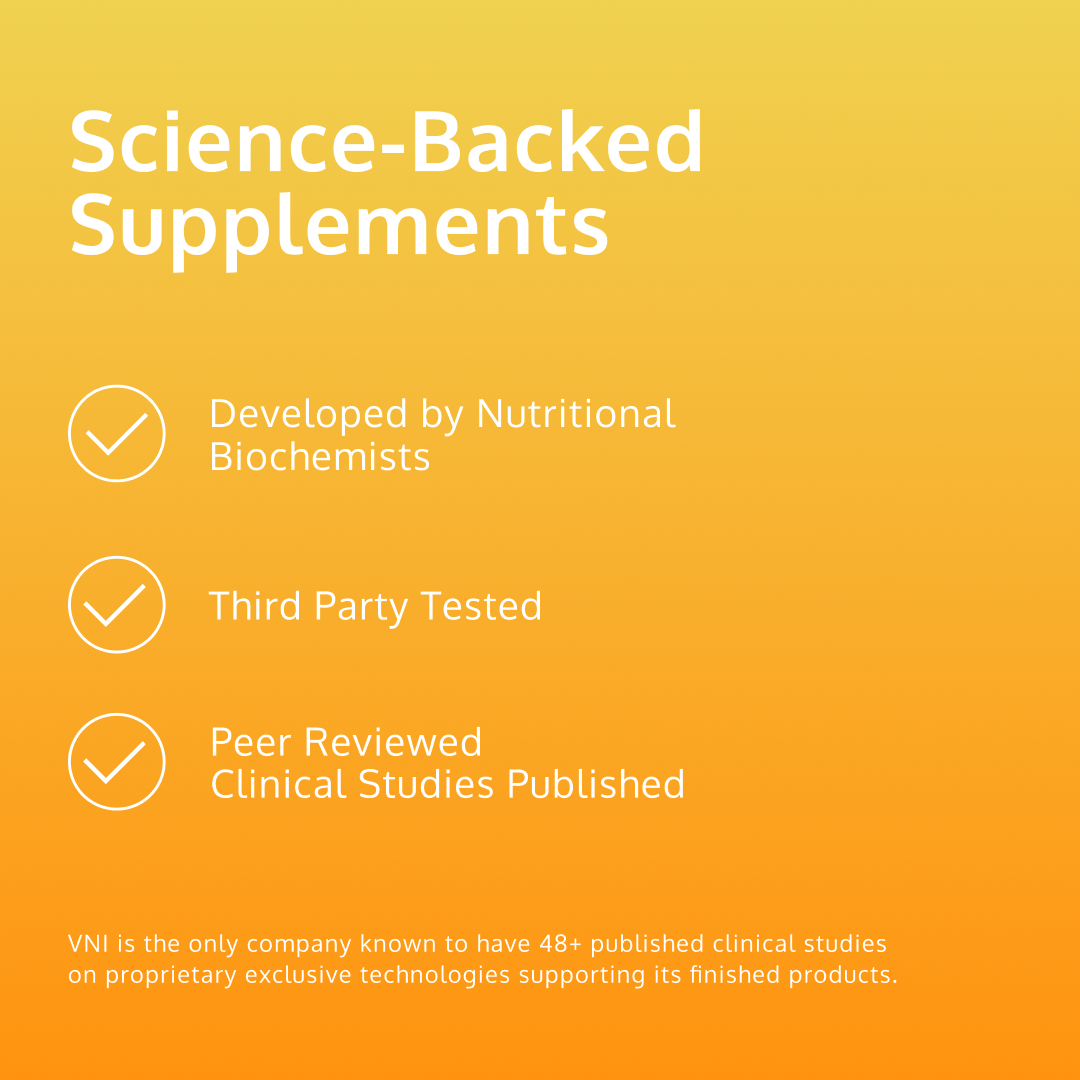
What is Prodosome® Absorption Technology?
-

HEALTHY AGING
Supports aging and cognitive health
-

COGNITIVE SUPPORT
Supports focus, concentration, cognition and mental sharpness
-

METABOLISM, ENERGY & STRESS SUPPORT
Supports your metabolism, energy and stress levels
-

HORMONAL BALANCE
Assists the maintenance of bodily hormonal balance
"With VNI, what you see is what you get. Zero fluff. Zero Fillers. Only quality products where everything has a purpose and is sourced for purity and potency."
Jeff Hooks, President and CEO
Science Backed. Nutrition Packed. Benefits Stacked.
Our science provides superior supplement formulations that work intuitively with your body in key areas of health.
Focused and clear thinking is so powerful in life challenges
Brain Reward works extremely well for my 11 year old daughter. She loves being focused and centered and she can tell a major difference in her social coping abilities wben she is without it. Her school work is now top notch and she is in better spirits more consistently without emotional overwhelm.
I often found myself struggling to concentrate and stay focused. I would start one thing and have a hard time finishing. After taking these vitamins on a regular basis, I’ve noticed a significant difference. My mind is clearer (no more brain fog!), I can concentrate longer, I have more clarity, and I’m finally able to finish what I start. I feel steady and calm while still being alert. Brain Reward® has been a huge relief and a real help in my everyday routine. Glad to have them be a part of my daily vitamin routine!
Last July 1, 2024, my husband, Steve, became very ill suddenly with many complications. His health was declining rapidly and it affected his mind as well.
I was using Prodovite and PerformLyte for my health issues and it helped me to do the things I needed to do, like cooking and walking, which I didn’t think I could do with what I was dealing with. I got permission from the doctor to use Brain Reward for my husband. About a week later, it seemed like a 15-watt light bulb came on in his head! And because of that we were able to get him into rehab which was previously turned down since he was so bad. One week later I went to pick him up and he was actually communicating and laughing with the roommate--he hadn't done that for three months! My husband walked the day after Thanksgiving! Just after New Year’s Day he was walking with a cane and was undergoing physical therapy.
I cannot tell you that my husband is what he was seven years ago, but I can say that I don't think he'd be where he is (or maybe even at home) without Brain Reward Cognitive. We both take it every morning, faithfully. I am grateful to God, Craig, and the creators of Brain Reward Cognitive.
I was struggling with life. A friend of mine kept talking about Brain Reward and how it helped him. He had been telling me this for 2 years. One day he even gave me some Brain Reward pills to try and I did not take them because I thought they were just “another” supplement that would not work. It was not until one day that he was insistent on coming over and asking me to try it. So, I gave in and I took them at 5 pm and had forgotten that I had taken them. At 9:30 pm that same evening I was up reading an article in a magazine and I noticed that I was actually reading it without feeling distracted and without feeling anxious. Normally, I would not even be up that late, let alone concentrating on a piece of reading material.
I called him immediately to learn how to place an order and started it as soon as the package arrived and have told many of my clients and friends. I believe Brain Reward changed my life and learning disabilities have significantly improved and I feel as if I am more productive.
I would recommend Brain Reward to anyone suffering from a tired brain and concentration issues.
Victory Nutrition International does not verify or endorse any claims made in these reviews. Statements regarding dietary supplements have not been evaluated by the FDA and are not intended to diagnose, treat, cure or prevent any disease or health condition.

